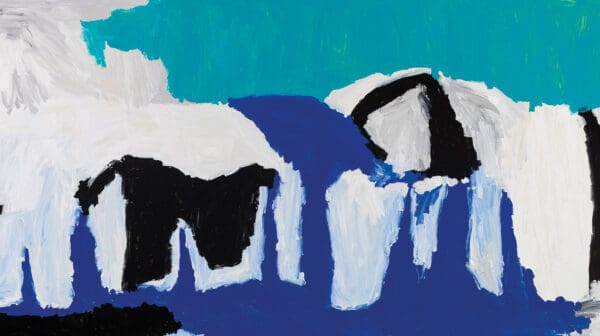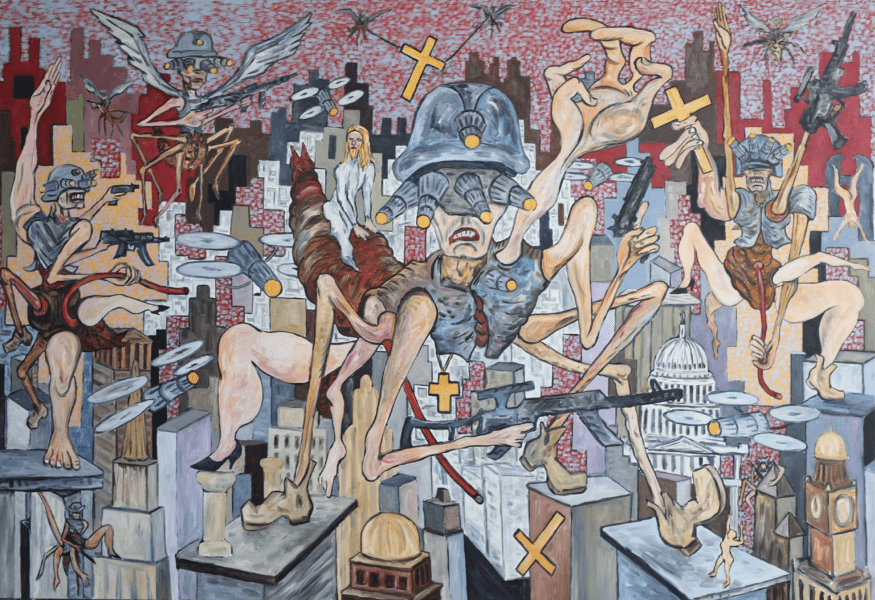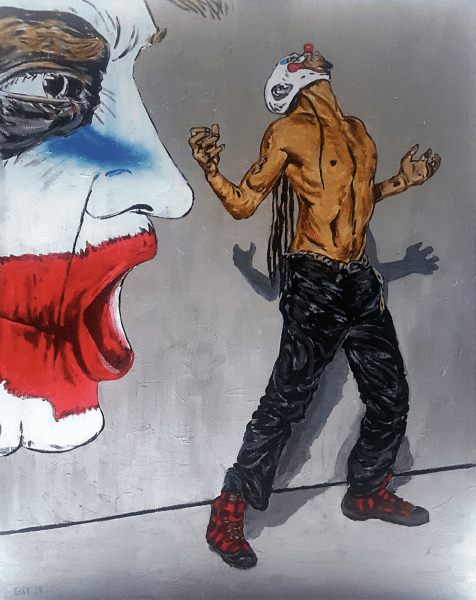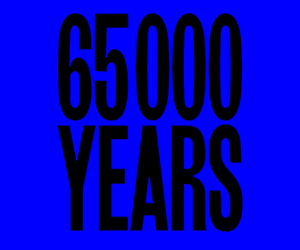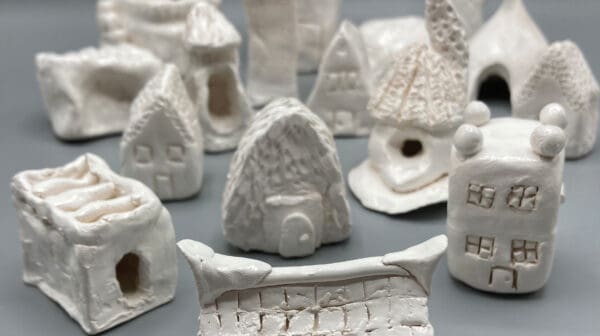It doesn’t feel quite accurate to describe On Being There as a George Gittoes survey exhibition or retrospective. But at the same time, it does cover the whole wide, sprawling, multi-faceted and multi-medium nature of his work, going back several decades. This Casula Powerhouse Arts Centre show might be regarded as a kind of memoir, given that it chronicles Gittoes’s art and community-based field trips to some incendiary places: Iraq, Rwanda, Afghanistan, Cambodia, Palestine, South Africa, and most recently a journey to the south side of Chicago, an area rife with gun crime.
Curated by art historian and writer Dr Rod Pattenden, On Being There features paintings, drawings, photography and film works from one of Australia’s most and outspoken living artists, whose career can be traced back to Gittoes’s co-founding of the famous Yellow House art collective in Sydney in the early 1970s. In partnership with collaborator and wife Hellen Rose, Gittoes has established new versions of the Yellow House in many of these unstable locations.
“Dr Pattenden wanted to show how the work I do on the ground in places like Iraq, Rwanda and Afghanistan is about acting with real people to help bring positive change through art,” says Gittoes. “As a result, paintings and drawings created in these places are combined with films and photography. On Being There is about creating in the face of destruction, war and social injustice. It spans a lifetime of inclusive art practice, from the original Yellow House to the Jalalabad and Englewood [Chicago] Yellow Houses of now.”
On Being There is a touring exhibition that was developed at Newcastle Art Gallery and has been shown at Wollongong Art Gallery. Unique to the Casula iteration is a portrait of Julian Assange produced in 2017 in the Ecuadorian embassy in London, as well as notes and sketches from the artist’s visit with Assange. Another key work in the show is the recent painting Security, 2020, created during the Covid lockdown. This unsettling work evokes Hieronymus Bosch, Otto Dix and Gerald Scarfe, and addresses issues of control and surveillance.
“Security is about how much of our personal freedom and privacy has been lost in order to be protected from terrorism,” says Gittoes. “In Afghanistan we see a drone fly over every 15 minutes, laden with bombs and missiles, and they all return empty of their deadly load. Security asks the question, ‘How long before this technology is used against us?’ And warns of a future in which protestors are confronted not by riot police with clubs, tear gas and shields, but drones operated by people a long way from the actual scene.”
It almost goes without saying that Gittoes’s work is confronting and designed to discomfort. He notes that, “My paintings are not like Matisse, to be enjoyed like a comfortable armchair.” A question arising from this is how art, such as that of Gittoes, can respond to and interpret war in ways that reportage and journalism cannot. The answer lies in the visceral nature of Gittoes’s intricate, detailed and surreal paintings, which really do compare with the grim anti-war works of Germans such as Dix, Max Beckmann and George Grosz. It is in their directness and immediacy that his explicit and polemical message of peace can be found.
“Many of my best friends are journalists who take the same risks in war zones that I do, but all agree that my approach is very different to theirs,” says Gittoes. “I believe that to create in the face of the destruction of war is the most important thing I can contribute. The need to communicate the enormity of these experiences requires the use of every medium available, from traditional painting and drawing to film and virtual reality. When people see me creating while destruction is going on all around, it gives them hope.”
The artist plans to return to Chicago and Afghanistan soon. Gittoes also has what he calls an “epic graphic novel,” titled Night Vision, in the works. And while his output shows no sign of slowing down, On Being There does have a feeling of looking back, and represents an opportunity for visitors to take stock of one of Australia’s most driven and idealistic artists.
“When I was young, I wrote to Mother Teresa of Calcutta for advice. After doing the Yellow House at Kings Cross I felt disillusioned about creating art that was consumed as if it was no more than amusement. I asked if I should retrain as a doctor or engineer. Mother Theresa wrote back, saying, ‘Use the creative talents that God has given you and if you use them to help others you will be a happy and fulfilled man.’ I am now 72, and am very pleased with the way I have spent my life.”
On Being There
George Gittoes
Casula Powerhouse Arts Centre
24 April – 27 June
